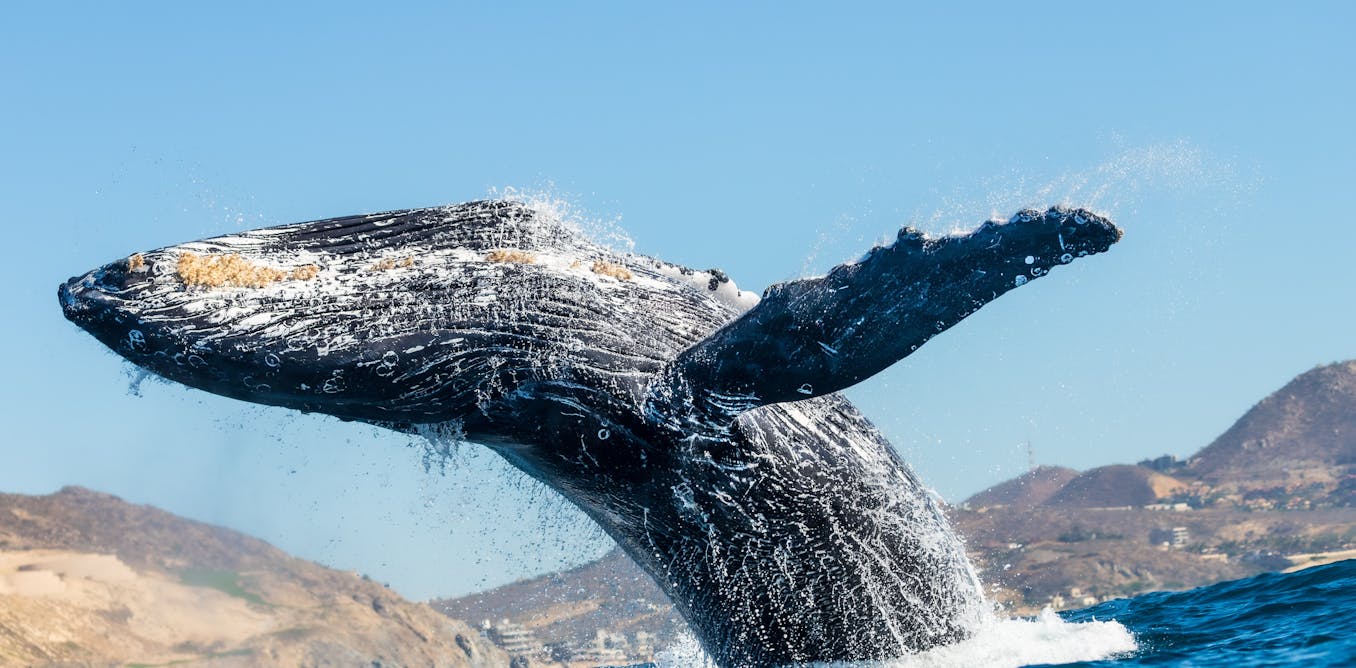The Australian researchers analysed a dataset of baleen whale genes and found that two of the largest species, blue and fin whales, have genes associated with a powerful immune system. Genes linked to survival and longevity were also found in all baleen species.
Baleen whales evolved bristly baleen plates instead of teeth, which filter or trap krill, plankton and small fish inside their mouths. The 14 baleen species include the rorqual family – slender, streamlined baleen whales such as fin, sei, humpback and the largest animal that has ever lived, the blue whale.
The ancestors of whales
The land-based, hippo-like predecessors of whales moved slowly to aquatic life. But a 2019 study showed that genes lost during this process helped these animals adapt to life diving deep underwater. For example, the loss of one gene reduced the risk of lung inflammation from diving.
Five genes stand out as different to smaller species (as well as certain DNA sequences that can enhance or switch on genes). These genes have been linked elsewhere to gigantism in whale sharks as well as larger species of fish and land carnivores.
We know from fossil studies the ancient animals that would become whales, Basilosaurus, started to radiate out further into the water 40 million years ago and began to dominate the ocean.
Initially, they ate sedimentary creatures from the bottom of the sea and rivers, as grey whales do today. Later (30-34 million years ago), those whale ancestors that went further into the sea fed on energy-rich, slow-moving prey that lived in large groups.


